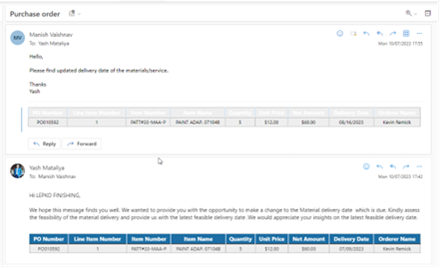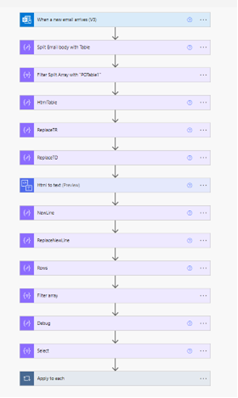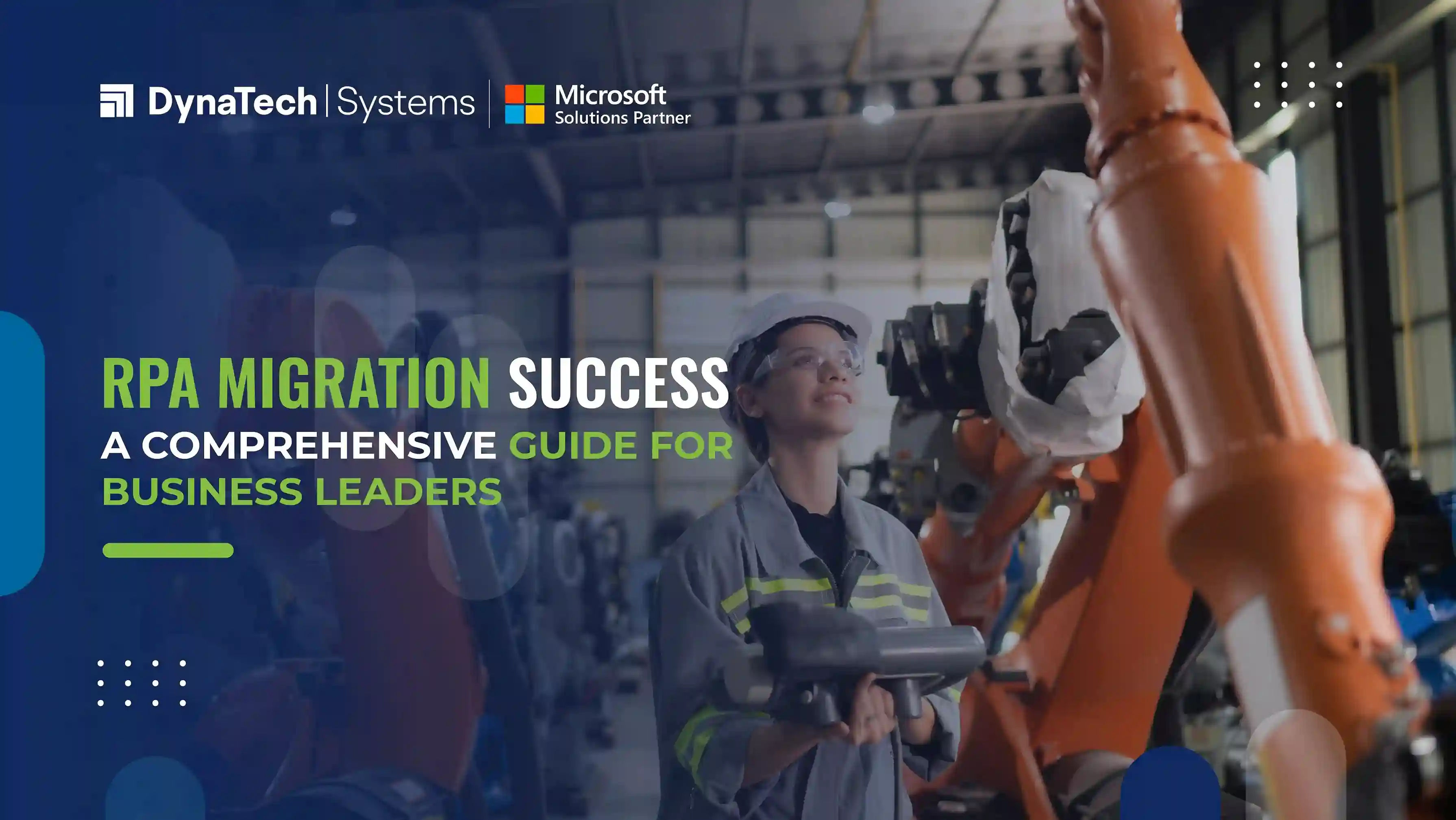-
The compelling business case for implementing Robotic Process Automation (RPA), much like other emerging technologies, cannot be ignored. However, business leaders face uncertainties when it comes to selecting the right technology, identifying processes for automation, and implementing an optimal architecture. As a result, enterprises are compelled to reevaluate their RPA strategies. With a wide array of over 150 RPA products available, each with varying levels of productivity, design quality, and approaches, business leaders must understand the technical complexities involved.
To scale RPA projects, organizations should gravitate towards technology that embraces business-led design principles, particularly platforms supporting no-code or low-code deployments. Using RPA in different ERP platforms like SAP, NetSuite, Microsoft Dynamics 365 is mainly dependent on the businesses’ needs.
In this blog, we will provide a comprehensive guide for business and technology leaders who have already initiated their RPA journey. Learn how to migrate from traditional RPA to modern low-code or no-code platforms, leverage technology effectively, gain stakeholder buy-in, and optimize automation outcomes for maximum ROI.

Issues that companies face while migrating to the new generation RPA
No.
Issues
Challenges and Solutions
1
Intelligently optimizing CAPEX returns
Explore RPA tools for existing implementations that provide substantial and cost-effective returns, expediting the offsetting of CAPEX.
2
Streamlining program management and governance
Migrating to a new RPA provider requires significant resources, but modern tools with low-code or no-code features simplify the process, empowering citizen developers and streamlining governance.
3
Managing the cost of parallel run
Efficiently handle costs during the transition by managing parallel runs to minimize disruptions, especially for mission-critical bots.
4
Overcoming operational and training challenges
Tackle challenges in remapping processes and retraining teams during the migration to a new RPA platform for smoother transitions.
5
Meeting the needs of customers with varying Microsoft footprints
Address concerns of non-Microsoft cloud customers by leveraging premium connectors or creating custom connectors for integration with Microsoft Power Automate.
6
Customers using Microsoft Azure
Maximize benefits for Azure users by utilizing Power Automate's direct integration with over 25 Azure services, enhancing end-to-end automation and promoting seamless integration with Azure AD.
RPA (Robotic Process Automation) in Power Automate
Effortlessly automate repetitive tasks by mimicking human interactions with software applications. Elevate accuracy and efficiency using bots, while freeing up resources for more strategic work.
Dashboard of RPA in Power Automate


Key Features of RPA
- Task Automation: Seamlessly automate repetitive tasks using software robots (bots).
- Exception Handling: Manage errors and exceptions for smooth execution.
- Process Integration: Seamlessly integrate with other systems and applications, enabling data exchange and streamlined end-to-end workflows.
- Desktop Automation: Interact with desktop applications, such as Microsoft Office Suite or legacy systems, using UI automation, allowing bots to mimic human actions.
- Scalability and Monitoring: Scale automation across various processes and monitor bot performance, providing insights for continuous improvement and optimization.

Steps for Successful RPA Migration: Navigating the Transition with Precision
- Comprehensive Assessment
Begin with a thorough assessment of your existing RPA landscape. Identify processes suitable for migration and evaluate the compatibility of current tools with modern RPA platforms. - Strategic Planning
Develop a detailed migration strategy, outlining key objectives, timelines, and milestones. Align the plan with organizational goals and consider the impact on different business units. - Technology Selection
Choose an RPA platform that aligns with your business needs. Prioritize solutions with low-code or no-code capabilities to facilitate smoother adoption by citizen developers. - Stakeholder Buy-In
Secure buy-in from key stakeholders, including both business and IT teams. Communicate the benefits of migration, addressing concerns, and ensuring a collaborative approach for a successful transition. - Parallel Run Testing
Conduct comprehensive parallel run testing to minimize disruptions during the migration. Identify mission-critical processes and ensure they function seamlessly on both the existing and new RPA platforms. - Training and Change Management
Implement robust training programs for teams involved in RPA processes. Address operational and cultural changes, fostering a positive attitude towards the new technology. - Governance Framework
Establish a governance framework that aligns with the capabilities of the new RPA platform. Streamline program management, ensuring clear accountability, and promoting effective collaboration between IT and business teams. - Cost Management
Manage costs efficiently by closely monitoring the parallel run phase. Strive to minimize expenses associated with maintaining both the old and new RPA platforms while ensuring a smooth transition. - Customization and Integration
Customize the new RPA platform to meet specific organizational needs. Ensure seamless integration with existing systems and explore options for creating custom connectors if necessary. - Data Migration and Security
Prioritize the secure migration of data from the old to the new RPA platform. Implement robust security measures to safeguard sensitive information and ensure compliance with regulatory standards. - Continuous Monitoring and Optimization
Monitor the performance of the new RPA processes post-migration. Identify areas for optimization, address any issues promptly, and leverage analytics to continuously improve automation outcomes. - Documentation and Knowledge Transfer
Document the migration process comprehensively, including configurations, customizations, and best practices. Facilitate knowledge transfer among team members to ensure continuity and enhance the organization's RPA capabilities. - Post-Migration Support
Provide dedicated support post-migration to address any issues and assist teams in adapting to the new RPA environment. Foster an environment that encourages feedback for ongoing improvement.
Use Cases of RPA Migration to Microsoft Power Automate
- Expense Report Processing
Scenario: Automating the processing of employee expense reports.
Benefits: Accelerate reimbursement cycles, minimize errors, and enhance compliance with expense policies. - Sales Order Processing
Scenario: Migrating sales order processing to a no-code/low-code environment.
Benefits: Expedite order fulfillment, reduce processing time, and improve accuracy in sales operations. - IT System Access Requests
Scenario: Automating the handling of IT system access requests and approvals.
Benefits: Enhance IT security, streamline access provisioning, and reduce response times. - Customer Support Ticket Routing
Scenario: Implementing automated routing of customer support tickets to the appropriate teams.
Benefits: Improve response times, optimize ticket resolution, and enhance overall customer support efficiency. - Data Migration and Validation
Scenario: Migrating data from legacy systems to modern databases with automated validation checks.
Benefits: Ensure data accuracy during migration, reduce manual intervention, and expedite the data migration process. - Data Migration and Validation
Scenario: Migrating data from legacy systems to modern databases with automated validation checks.
Benefits: Ensure data accuracy during migration, reduce manual intervention, and expedite the data migration process.
How can migration to Microsoft Power Automate prove beneficial for your organization?
- Automation At Scale
Microsoft Power Automate enables seamless automation scalability throughout your organization, empowering end-users, professional developers, and IT teams to effortlessly automate workflows utilizing both on-premises and cloud-based applications and services. It also revolutionizes citizen development by providing an unprecedented platform for non-technical users, a feature largely absent in traditional or existing tools.
- Secure Integration
Microsoft Power Automate facilitates the creation of secure integrations at all levels, empowering users to confidently develop automated workflows in a secure and compliant manner. This allows skilled IT resources to allocate their time and expertise to more intricate tasks related to governance and complex operations.
- Stimulate Productivity
Microsoft Power Automate alleviates the burden of repetitive and time-consuming tasks, allowing teams to focus on strategic initiatives. Its user-friendly low-code or no-code tools, pre-built templates, and a wide range of connectors enable seamless implementation across the organization. With Power Automate included in Office, there are no additional expenses associated with citizen development, making it a cost-effective solution.
- Intelligent Automation
The AI Builder functionality in Microsoft Power Automate empowers users to enhance their business processes through AI models, all without requiring coding or data science expertise. This user-friendly, point-and-click experience enables the development of custom models tailored to specific needs or the utilization of prebuilt models for common business scenarios, ensuring optimal optimization of your processes.
- Automation in both cloud and on-premises
Microsoft Power Automate embodies the true essence of automation by offering an automation strategy tailored to your organization's needs, either on-premises or cloud. Its seamless integration with the Microsoft ecosystem facilitates accelerated automation through effortless utilization of native integrations.
- Strategic Unification
Microsoft Power Automate offers centralized governance across its services, benefiting from its association with the comprehensive family of solution-focused low-code products within the Power Platform. This cohesive ecosystem enables seamless integration and usage of related service products. With Power Automate, you can leverage the power of Dataverse as a native data source with a relational structure, effortlessly build chatbots using Power Virtual Agents, swiftly develop functional apps with Power Apps, and seamlessly generate reports using Power BI.
End Note
In summary, embarking on the journey towards a no-code/low-code RPA solution, such as Microsoft Power Automate, stands as a strategic leap for organizations seeking to elevate productivity, streamline operations, and revolutionize their business processes. The adoption of this advanced technology not only promises efficiency but also serves as a catalyst for substantial cost savings.
At Dynatech, our team of experts is dedicated to ensuring a seamless and optimized migration experience across all platforms. We understand the intricacies of RPA migration and are poised to guide you through this transformative process. Get in touch with us to unlock the full potential of your automation journey and propel your organization into a future of enhanced efficiency and innovation.




























